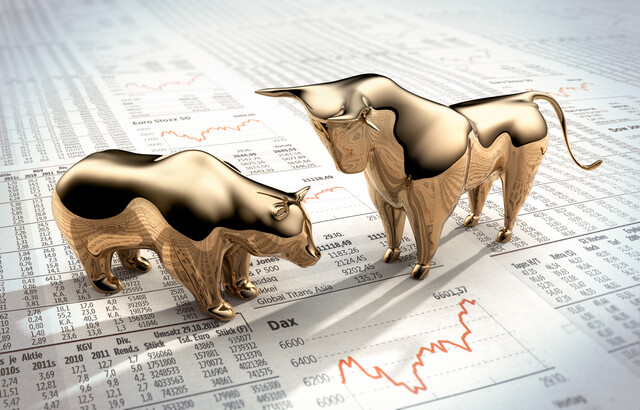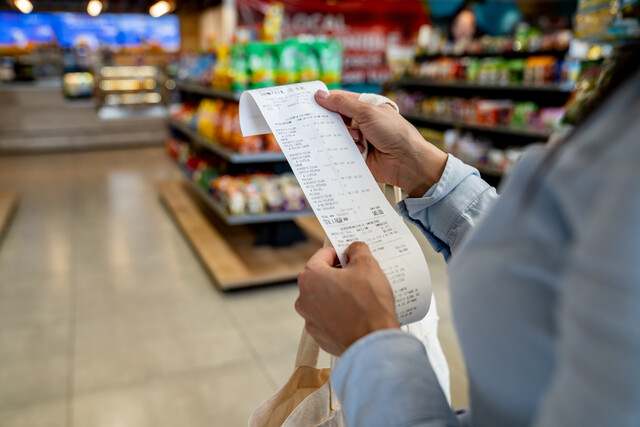|
Commodities and Futures Contracts
|
A commodity is defined as a tangible product "for which there is demand, but which is supplied without qualitative differentiation across a market". This means that a commodity remains constant no matter where it is sold, and there are no significant differences among products within a commodity group (called an asset class). There are several commonly recognized commodity classes within the United States (see Figure 1-1). Commodities are sold by producers (e.g. farmers, energy suppliers) and purchased by dealers (e.g. food processing companies).
In order to protect producers and suppliers from sudden or significant swings in prices for a commodity, a financial mechanism was developed called a futures contract, which is a written agreement that specifies the size (quantity), price, grade (quality) and terms for delivering the good at a certain date in the future. These contracts are traded (bought and sold) between producers, dealers or speculators (i.e. traders seeking a profit from price movement).
Common US Commodities/Futures
|
|
History of Commodity and Futures Trading
|
The world's first commodities arose from agriculture practices (crop production and raising livestock). Archaeological discoveries indicate that agriculture developed around 10,000 BC, as humans began settlements and farming. An agricultural revolution started around 8,500 BC, which led to trading commodities between settlements. As trading developed, producers and dealers looked for ways to preserve the price of their products. Factors such as weather, conflict, and supply and demand wreaked havoc on pricing. In addition, as supplies became more plentiful, storage was necessary; merchants sought ways to raise money while their product sat until being sold. This is how futures agreements began. According to Bruce Babcock, a noted commodity authority, the first recorded commodity futures trades occurred in 17th century Japan, though there is some evidence that rice may have been traded as far back as 6,000 years ago in China. (Babcock, 2009)
In the US during the early 1800s, agricultural commodities – notably grains – were brought from Midwest farmlands to Chicago for storage until being shipped out to the east coast. Because agricultural products are perishable, the quality of the stored items would usually deteriorate over time. While stored, the purchase prices would occasionally change so the first contract for a future price was created. This forward contract allowed a buyer to pay for the commodity prior to taking delivery of it.
As more farmers and merchants began delivering their wares to Chicago, the first American exchange was set up in 1848. It was called the Chicago Board of Trade (CBOT). This group of brokers established a more efficient, standardized method of exchanging goods and payment by creating futures contracts. Instead of managing numerous customized contracts between interested parties, they streamlined the process of buying and selling future delivery for a present price by generating contracts that were identical in terms of quality of the asset, delivery time and terms.
For over 100 years, agricultural products remained the primary class of futures trading. The CBOT added soybeans in 1936. In the 1940s, exchanges included trading for cotton and lard. Livestock was added to the trading "block" during the 1950s. Contracts for precious metals like silver started trading during the 1960s. By the 1970s, when global currencies were no longer tied to gold prices, currency values fluctuated based on supply and demand, and financial futures became a tradable "commodity". Suddenly you could trade prices instead of goods. This opened up a new era – one where a cash settlement is used instead of the traditional "delivery" of goods. Throughout the 80s and 90s, stock market index benchmarks like the S&P 500 and government debt instruments were added to the list of tradable futures.
During the 20th century, exchanges opened up all over the United States. Cities such as Milwaukee, New York, St. Louis, Kansas City, Minneapolis, San Francisco, Memphis, New Orleans and others hosted trading, but Chicago remained the most influential location for commodities futures trading.
In the early 21st century the advent of the online trading systems led to heightened interest in commodities and futures. From the comfort of home or office, buyers and sellers can place orders through electronic trading systems and online brokerage houses. Easier access and increased information sharing led many to pursue careers in futures trading.
These new steps brought thousands of more participants into the trading arena. Commodities and futures trading became a hedge to protect their financial interests against losses in other investment areas, such as stocks and bonds. Individuals and investment companies poured millions of dollars into the commodities and futures markets. This influx of new third-party traders now has a significant impact on the prices of commodity-based goods. Their interest is not necessarily securing the price of goods they will take control of; rather they use speculation about buying and selling behaviors to predict a futures contract's value. These new players seek to make profit through price movement.
While the first futures trading involved primarily the farmers and dealers, today's traders could include your neighbor or coworker. Currently, the ten most active exchanges conduct over one billion trades per year, and there are exchanges in over 30 countries. During the early years of the 21st century, several markets combined to form super-exchanges which offer a broader selection of contracts that can be traded. Through Internet activity, futures traders on remote islands can interact through brokers in large cities worldwide, thus creating a diverse global marketplace for establishing commodity pricing.
Futures Markets
| Futures Markets – United States and Abroad |
Since the first official commodity exchange began during the 1700s in Japan, the market for trading commodity contracts has grown to international proportions with exchanges on six continents. As more components have been added – such as financial and energy contracts – the term "commodities market" has become evolved to become the futures market. During the late 20th century, exchanges opened and merged (such as the Chicago Board of Trade merging into the Chicago Mercantile Exchange) as the volume of traded contracts increased dramatically. In most cases, the underlying commodity is not even exchanged between the contract seller and buyer. Activity in the markets is measured in volume – the number of contracts traded. Figure 2-1 lists some of the most active futures exchanges.
There are also smaller exchanges that specialize in one particular futures class, such as Eurex US which focuses on contracts that compare international currencies. As more speculators entered the markets, exchanges look for ways to facilitate more trading. With the evolvement of technology, exchanges can now link together, expanding the number of transactions. Exchanges all over the world are connected through systems that automatically enter an order placed on one exchange but executed on another. And trading is no longer limited to daytime operations. In 1992 an electronic platform called Globex began, offering 24-hour trading for many futures. This move extended futures trading to a limitless, around-the-clock practice, which broadened interest further in trading commodities and futures contracts. Interest has grown so much that the entire markets themselves are now traded as indexes by speculators.
Chicago Board of Trade
The CBOT originally traded corn, wheat, oats and soybeans, but has grown to offer over 25 products. Its first financial product – a Guaranteed National Mortgage Association ("Ginnie Mae")-backed certificate – was added in 1975. The exchange continued its broadening in 1982 by introducing a new category for trading called an option, which gives a buyer the right to acquire or sell a contract within a limited period of time. This innovation became so popular that the Board later opened a second exchange – the Chicago Board Options Exchange.
The Board started an electronic trading system in 1994 to facilitate a more fluid transaction process; however, the original trading method of an open auction held on the exchange floor is still used today for some commodities. There are more than 3600 members of the CBOT who traded nearly 35 million in January 2009. The exchange merged with the Chicago Mercantile Exchange in 2007, becoming part of the CME Group.
Chicago Mercantile Exchange
The CME began as the Chicago Butter and Egg Board in 1898 and evolved into the Mercantile Exchange in 1919. It has led the way in many futures trading initiatives. Starting as an agricultural exchange, the CME added livestock in 1961 with the first frozen pork belly contract. It introduced the world's first financial products in 1972, dealing contracts on seven foreign currencies. The first international link was established, with the CME and the Singapore Exchange Derivatives Trading Ltd. connecting in 1984. In addition, the Exchange introduced the world to the Globex system in 1992.
In 2007, the CME merged with the CBOT to become the CME Group. The group expanded further as it acquired the New York Mercantile Exchange in 2008.Today the group of exchanges manages trade volume of around six million contracts on a daily basis.
New York Mercantile Exchange
The NYMEX was founded in 1882, beginning as the New York Butter, Cheese and Egg Exchange. It is the world's largest physical futures exchange, and includes the Commodity Exchange (COMEX), established in 1933 when a collection of smaller trading groups merged. NYMEX pioneered energy futures in 1978 and continues to be one of the most recognized exchanges for energy-related trading. In addition to energy products, contracts include metals, coffee, cocoa, sugar and environmental products. The exchange traded an average of 1.3 million contracts per day in 2008.
Kansas City Board of Trade
The KCBOT was founded in 1856 as a clearinghouse for grain merchants. It continues to exist primarily as a grain exchange, bringing together merchants worldwide. It trades over 10,000 contracts per day on average, mostly wheat products. The Board did introduce an influential and popular innovation during the 1980s: the stock index future.
New York Board of Trade
The NYBOT is New York City's oldest exchange, dating back to 1870 when it began as the New York Cotton Exchange (NYCE). Since then it has undergone several growth phases. In 1882 the Coffee Exchange joined the NYCE then formed the Coffee and Sugar Exchange in 1916 after issuing its first sugar contracts. The Cocoa Exchange later merged with the CSE creating the Coffee, Sugar and Cocoa Exchange (CSCE). The NYCE and CSCE officially became the NYBOT in 2004. It now operates under the IntercontinentalExchange® (ICE) which acquired the NYBOT in 2007. In October 2008, the exchange traded just under 8.2 million contracts for the month.
Minneapolis Grain Exchange (MGEX)
The MGEX began as the Minneapolis Chamber of Commerce in 1881 issuing its first futures contract on hard red spring wheat. It operated as the Chamber until 1947 when it became the MGEX because the term "chamber of commerce" had become recognized as a social/civic organization. The exchange remains primarily a grain futures clearinghouse, trading both the commodities contracts and agricultural index futures. Since 1997, the MGEX has averaged over one million contract trades per year.
IntercontinentalExchange (ICE)
Born out of the electronic trading systems that evolved throughout the 1990s, the ICE began trading in 2000 using a technology infrastructure that linked markets together. The exchange began using its electronic platform to trade energy futures. In 2001, it acquired the International Petroleum Exchange (IPE), following that with a purchase of the NYBOT in 2007. The ICE has helped expand the market for over-the-counter (OTC) futures, which are typically too small to be listed on major exchanges. Over 219 million shares traded over the ICE networks in 2008.































